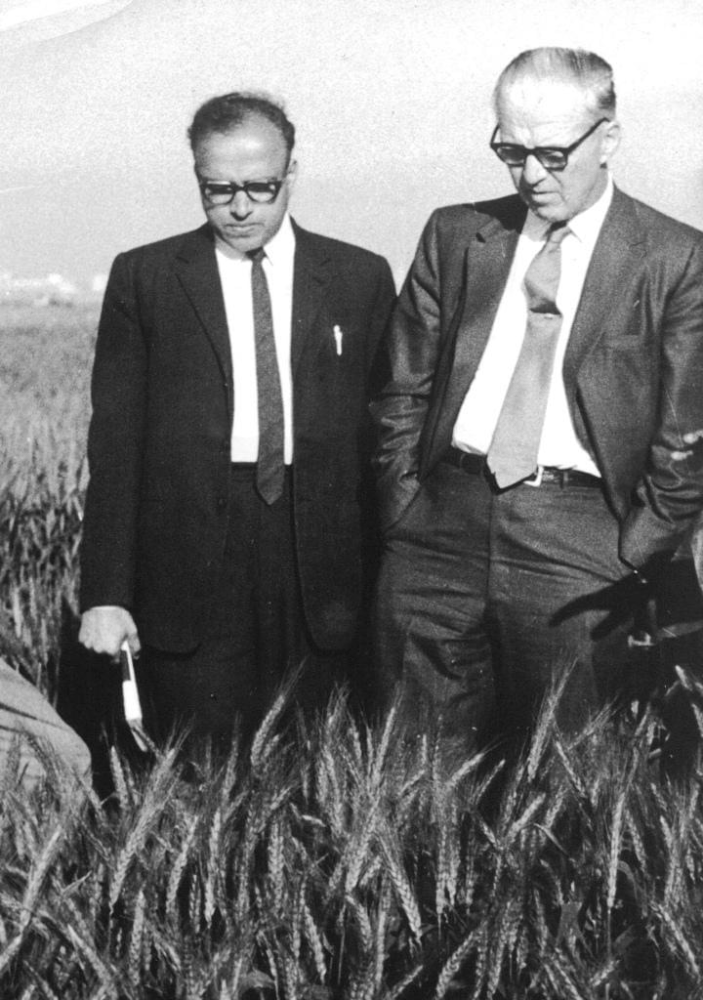
The world moves forward when individuals use their education to solve national and global problems.
Dexterity's National Scholar Development Program envisions an India where every young citizen is prepared to thrive at a global stage and contribute to nation-building.
From green revolution to our space program—it all happened when ordinary individuals used their education to solve extraordinary problems.

Vikram Sarabhai and Indian Space Program
In 1947, a young boy Vikram completed his undergraduate and doctorate degree from the University of Cambridge in England and returned to an independent India. At a time when Space was dominated by affluent countries as the United States and Soviet Union and space technology was unknown in India, Vikram Sarabhai set up the Indian National Committee for Space Research (INCOSPAR) which laid the foundation for the Indian Space Program and led to the establishment of the globally acclaimed Indian Space Research Organization (ISRO). Today, India has emerged as a world leader in space technology and Vikram Sarabhai is remembered as the Father of Indian Space Program.

M.S. Swaminathan and Green Revolution
In the 1960s, it was widely predicted by demographers and economists that the population would outstrip food production so much that the 1970s would be a time of famine in India and the rest of Asia. Inspired by the example of Mahatma Gandhi, a young man born in 1925 in a small village named Kumbakonam in Tamil Nadu was committed to serving his country and considered becoming a police officer. Winning a fellowship in 1949, he instead studied agriculture in the Netherlands and the United Kingdom and earned a Ph.D. in plant genetics from University of Cambridge in 1952. Dissatisfied with the idea of living abroad as a professor, he returned to India to tackle the crisis of low food production rates across Asia. Dr. Swaminathan’s work and vision transformed India from a "begging bowl" to a "breadbasket". In 1999, Time Magazine listed Dr. M.S. Swaminathan, the Father of India’s Green Revolution, as one of “20 most influential Asians of the 20th century."

Verghese Kurien and White Revolution
In 1948, a young Verghese Kurien returned to India after completing an M.S. degree with distinction at Michigan State University in the United States on a scholarship by the Govt. of India and later received training in dairy technology in New Zealand—the global hub of dairy technology—sponsored by the government again. Over the next few decades, Dr. Kurien envisioned the “billion-litre idea” and kickstarted Operation Flood, the world's largest agricultural dairy development program which transformed India from a milk-deficient nation into the world's largest producer of milk, surpassing the United States — the country he had left to return to India. The cooperative movement he helped create revolutionised the dairy and agriculture industry and became a model for the rest of the world to follow. Known as the Father of the White Revolution and the “Milkman of India,” Dr. Kurien changed the lives of millions of Indian dairy farmers through AMUL (Anand Milk Producers Union Limited) and inspired numerous organizations and industries to follow the "Anand pattern" of cooperatives.

Satish Dhawan and Space Faring India
In 1947, as India took its first steps as a newly independent nation, a young man Satish, in his twenties then, got an offer to pursue his higher education in the United States. He joined the University of Minnesota, from where he obtained an M.S. in Aeronautical Engineering, before moving to the California Institute of Technology (Caltech) where he received a Ph.D. in Aeronautics and Mathematics. Satish Dhawan, the father of experimental fluid dynamics research in India, went on to be the longest (and youngest) serving director of the Indian Institute of Science (IISc, Bengaluru). As the leader of ISRO, Prof. Dhawan carried out pioneering experiments in rural education, remote sensing and satellite communications which led to operational systems like INSAT - a telecommunications satellite, IRS - the Indian Remote Sensing satellite and PSLV - Polar Satellite Launch Vehicle, that placed India in the league of space faring nations. Dhawan's leadership is not just in science but also in mentoring and grooming some of India's greatest leaders, including President Kalam.

A.P.J. Abdul Kalam and Indian Missile Program
In early 1960s, Vikram Sarabhai, the Father of India’s Space Program, dispatched a seven-member team to train with NASA and learn the art of assembling and launching small rockets for collecting scientific data. Among those handpicked by Sarabhai was a young scientist at DRDO by the name of A.P.J. Abdul Kalam. Dr. Kalam’s training spanned three NASA facilities — Langley Research Center (LaRC) in Hampton, Virginia, Goddard Space Flight Center (GSFC) in Greenbelt, Maryland and Wallops Flight Facility (WFF) at Wallops Island, located on Virginia’s Eastern Shore. His NASA training made possible the first sounding rocket launch on 21 November 1963 from the Thumba Equatorial Rocket Launch Station (TERLS) in southern India. What followed in the next few decades remains history. The Missile Man of India led the team behind India’s nuclear tests at Pokhran, making India a nuclear power, and served as the architect of India's civilian space program and military missile development.
Copyright © 2025 The Dexterity Global Group




